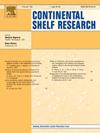Satellite based assessment of potential fishing zones (PFZs) within the exclusive economic zone (EEZ) of Pakistan
IF 2.2
3区 地球科学
Q2 OCEANOGRAPHY
引用次数: 0
Abstract
Pakistan's Exclusive Economic Zone (EEZ) is blessed with a broad spectrum of marine life. Identification of such potential fishing zones (PFZs) can be highly profitable for sustainable fisheries by complementing to their catch and efficiency. Advancements in satellite remote sensing have made their way into marine environmental monitoring and assessment by providing reliable data about oceanographic parameters. The objective of this study is to identify PFZs using three of the crucial marine parameters, including Sea Surface Temperature (SST), Chlorophyll-a (Chl-a) and Particulate Organic Carbon (POC) concentrations. EEZ of Pakistan has been subjected with Moderate Resolution Imaging Spectroradiometer (MODIS) satellite images for a temporal window, consisting of January to December 2022. The outcomes of the study reveal that during January, February and March, the PFZs within EEZ of Pakistan is found filled with categories good and premium fishing zones, while a sharp decline is observed till the month of August due to the southwestern monsoon. In the later part of the year, PFZs starts to stretch its boundaries along the coastal area, which gradually expands in the whole EEZ with the succeeding months of the year. These results are further validated with the help of fishing activity data from Global Fishing Watch (GFW) and is also supported with meteorological data over EEZ. The study provides a cost-effective method using satellite remote sensing to identify PFZs; however, highlighting the importance of catch data accuracy for validation of PFZs distributions.
基于卫星的巴基斯坦专属经济区内潜在渔区评估
巴基斯坦的专属经济区(EEZ)拥有广泛的海洋生物。确定这种潜在渔区对可持续渔业来说是非常有利可图的,因为它补充了可持续渔业的捕获量和效率。卫星遥感技术的进步通过提供有关海洋参数的可靠数据,已用于海洋环境监测和评估。本研究的目的是利用三个关键的海洋参数,包括海面温度(SST)、叶绿素-a (Chl-a)和颗粒有机碳(POC)浓度来确定pfz。对巴基斯坦专属经济区进行了2022年1月至12月的中分辨率成像光谱仪(MODIS)卫星图像。研究结果表明,在1月、2月和3月,巴基斯坦专属经济区内的自由贸易区被发现充满了类别良好和优质的捕鱼区,而由于西南季风的影响,直到8月才出现急剧下降。在年底,自由经济区开始沿着沿海地区扩展其边界,并在随后的几个月中逐渐扩大整个专属经济区。这些结果在全球渔业观察(GFW)的渔业活动数据的帮助下得到进一步验证,并得到专属经济区气象数据的支持。该研究为利用卫星遥感识别pfz提供了一种经济有效的方法;然而,强调捕获数据准确性对于pfz分布验证的重要性。
本文章由计算机程序翻译,如有差异,请以英文原文为准。
求助全文
约1分钟内获得全文
求助全文
来源期刊

Continental Shelf Research
地学-海洋学
CiteScore
4.30
自引率
4.30%
发文量
136
审稿时长
6.1 months
期刊介绍:
Continental Shelf Research publishes articles dealing with the biological, chemical, geological and physical oceanography of the shallow marine environment, from coastal and estuarine waters out to the shelf break. The continental shelf is a critical environment within the land-ocean continuum, and many processes, functions and problems in the continental shelf are driven by terrestrial inputs transported through the rivers and estuaries to the coastal and continental shelf areas. Manuscripts that deal with these topics must make a clear link to the continental shelf. Examples of research areas include:
Physical sedimentology and geomorphology
Geochemistry of the coastal ocean (inorganic and organic)
Marine environment and anthropogenic effects
Interaction of physical dynamics with natural and manmade shoreline features
Benthic, phytoplankton and zooplankton ecology
Coastal water and sediment quality, and ecosystem health
Benthic-pelagic coupling (physical and biogeochemical)
Interactions between physical dynamics (waves, currents, mixing, etc.) and biogeochemical cycles
Estuarine, coastal and shelf sea modelling and process studies.
 求助内容:
求助内容: 应助结果提醒方式:
应助结果提醒方式:


